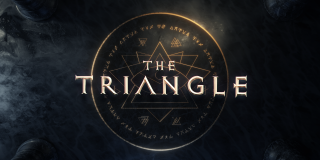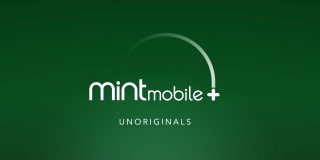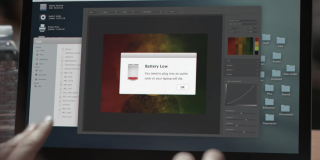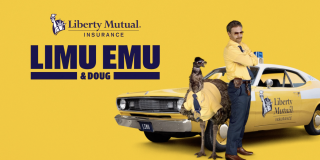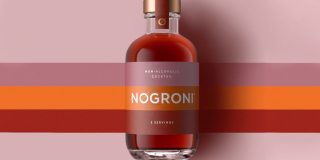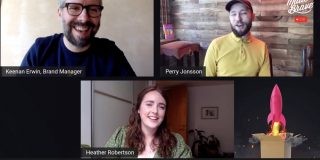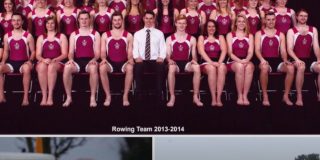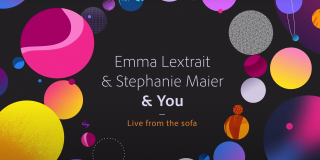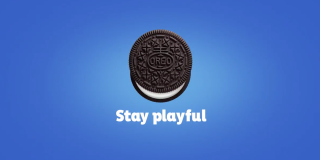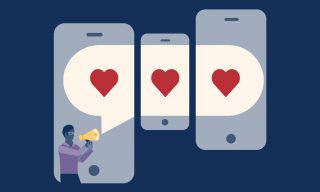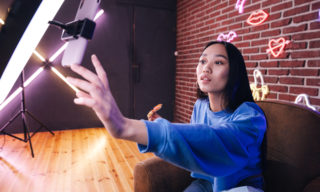With lower foot traffic in shops and no events to hold, digital content has become the best way for brands to reach and connect with their audiences. And yet, despite the challenges, our fellow brand-builders have been knocking it outta’ the park!
The thing is, limitations can sometimes be good for creativity and as every brand has been experiencing those same limitations, we’ve seen some interesting trends make their way into the content stratosphere. Here’s some of them…
#1 Long-form video for commercial content
Short and long-form content have very different objectives and benefits, so effective content uses each platform in a bespoke way.
For channels like TikTok and Instagram, shorter content is best-suited, but that’s not necessarily the case for YouTube. In a recent study, YouTube reported that topics such as home workouts, guided meditation, museum tours and of course, ‘how to make sourdough’ were in their top searches since lockdown began, showing an increased appetite for longer, more-detailed video content (and home-baked goods).
Longer-form content has the benefit of letting the narrative breathe and build—you can add richness to a story and weave in key messaging in a more authentic way. A layered story allows you to pull in your audience slowly, and keep them engaged, like any good story your best mate tells you at the pub. This ultimately leads to more meaningful brand engagements, which is what it’s all about, really.
Right now, brands are becoming more and more invested in increasing their brand favourability and equity, rather than just awareness—they want to create a powerful and positive connection with their consumer, which can be done with story-driven video content.
Some recent examples:
- 80 minutes of bingetastic Ryan Reynolds by Mint Mobile
- The video we created for Doritos telling the story of a lone chip that joins a hallowed order rooted in both secrecy and tradition (more here!)
#2 Comedy & Entertainment
“When making an advert for TV, you’re being invited into people’s homes. Arrive with good spirits and aim to be an entertaining guest.”
Because of lockdown, people have been at home way more than usual and screen time estimates have increased to over 13 hours per day compared to the 10 hours per day this time last year. Not only is your brand a guest in people’s homes, it’s practically changing into its slippers and moving in for a few months.
Pair this with the fact that people are being more careful with their money due to job uncertainty, there’s a real shift in how brands are speaking to their audience. It’s less ‘sell, sell, sell’ and more ‘step right up!’, with a real focus on this trend of entertainment and humour.
When creating film content, you need to consider the entertainment value just as much as you consider the messaging. The key here is to not take yourself too seriously, to not be afraid to come across as silly and to consider the balance of functional messaging and comedic entertainment (it’s all fun and games making people laugh, but that laugh eventually turns into confused silence if they don’t know what you’re actually selling).
Some recent examples:
- More Ryan Reynolds (we’re not sorry) in this hilarious video by Aviation Gin
- That ‘I’m Dying’ video from Chromebook
- Of course, the Liberty Mutual LiMu Emu
#3 CG Animation
Here’s the thing with CG Animation—even when film production has stopped because the world is on lockdown, you can still create incredible content and a custom-built world for your brand.
With technology advancing, it’s easier and cheaper to produce CG animation to an incredibly high standard—and faster too. One person can create an amazing 30-second piece in seven days and it can be done from anywhere (no two-week quarantine needed). For a lot of brands that would otherwise create live-action film, CG animation has been a content life-line during lockdown.
Some recent examples:
- Burberry created a CG version of Kendall Jenner and their new products to launch their Summer monogram
- We created a CG animation for Seedlip’s NOgroni

#4 Imperfect Visuals
Previously, content would strive to look as polished and smooth as possible. This current trend, however, shows the opposite, where filmmakers choose to operate the camera hand-held rather than sticking it on a dolly or a tripod. Why? It makes their content feel more authentic and audiences want authenticity.
This isn’t the first time we’ve seen this kind of shift. 60 years ago, filmmakers wouldn’t use lens flares, because they didn’t want to remind the viewer that this is a movie, made with a camera. Lens flares would only appear in documentaries, where an inherent lack of control made them impossible to avoid. 10-20 years later, lens flares started showing up in films. The reason for this? Audiences associated flares with documentaries and authenticity, and so filmmakers started incorporating lens flares to make the film feel more real.
This trend doesn’t just apply to video—it also applies to photography and live content, too. Especially during lockdown, brands didn’t have access to glossy studios and production teams, and so content, by nature, became more homemade.
#5 Brands on TikTok & Reels
It’s still too early to tell, but odds are that TikTok and Instagram’s Reels reflect the next steps in this evolution of what is perceived as authentic. There’s a few hallmarks of content currently being created on these platforms: Unpolished and goofy with a general trend towards the subjects not being afraid to look silly. It’s the opposite of try-hard. Our spidey-senses are telling us that we are witnessing the next step in the authenticity evolution. In a few years time, being unapologetically goofy and honest will be the next trend in branded content.
As TikTok and Reels have all the editing features in them, it makes content creation more accessible. With these platforms, no-one needs to have a fancy camera, or a storyboard to make a great piece of content—in fact, it’s better if they don’t. All the equipment they need is in their back pocket.
For those who find it difficult to come up with ideas, there are regular ‘challenges’ that act as templates for brand builders to create something short, snappy, fun and trending at that time. During lockdown, TikTok became an even bigger sensation than it was before — giving people all over the world something to do with their extra time and brands an opportunity to reach them.
Some recent examples:
- Chipotle combines music, humour and guac to bring you this content gold
- Crocs’ everyday shot-on-a-phone TikTok content
- ASOS’ full-works ‘Ay Sauce’ TikTok challenge

#6 Editorial Content Platforms
As we mentioned above, long-form content is making a comeback. As a result, brands are building their own editorial content platforms—creating content series across video, podcasts and even print to tell stories that dig deeper and really resonate with their audience.
In the last six months, these content platforms have sprung into action to create lockdown-related content and lead entertainment-seekers away from Zuckerberg-owned social media channels towards platforms that they, the brands, can control.
A few examples:
- Mailchimp Presents
- Courier (magazine and media company owned by Mailchimp)
- WePresent by WeTransfer
- Ketchup+ by Doritos
#7 Branded Communities
On the same token, brands have started creating their own communities for people to chat and share content in closer digital environments.
A lot of these communities were born at the start of lockdown, aiming to offer support and give people a space to air their worries with other folks who were in the same situation as them. As organic social media becomes less effective as it was in the good old days, a shift to gated communities is likely on the cards. With channels like Slack and Circle, the future could be in favour of users building their own tailored version of the internet with a collection of communities that are centred around their interests.
A few examples:
- Creative Boom Chat
- Creative Industry COVID Support
- Jacuzzi Club
- Girlboss
- Also on our blog: Our Top Ten Support Communities for Creatives

#8 Webinars
Within the space of a few months, it became normal to see industry-leaders speaking on camera in their living room, with their kids in the background making a spaceship for the cat out of a laundry basket. Where events once took centre-stage, webinars became a mainstay for (especially) B2B businesses during lockdown.
For one, webinars became something to do. People were at home, some were furloughed and for a lot of people, that time off was an opportunity to learn new skills and listen to other people’s stories in a way that they maybe wouldn’t have been able to do in a pre-lockdown world.
We started both our Relaunch Roadmap webinar series and live fortnightly interviews in collaboration with our pals at Creative Entrepreneurs Club. We found that organic Linkedin live broadcasts are averaging nearly the same number of video views (85%) vs other video content that we put ad spend behind, which shows that live broadcasts have a lot of potential.
Recent examples:
- Our broadcast today on…dun dun dunnn…top trends and the future of content!
- Creating training ideas to do at home with British Rowing
- Adobe interviewed creatives every single weekday with Adobe Live from the Sofa
#9 Brand Activism*
This year, especially the Black Lives Matter movement, has turned the spotlight on brands to do what’s right. In modern history, there has never been such a widespread call for businesses to make positive change.
A recent study showed that 64% of consumers said that they would either support or boycott a brand based on its position on a social or political issue. The old rule of ‘brands shouldn’t be political’ is no longer relevant as audiences are keeping a very close eye on who supports what’s important to them and in turn, which businesses they’ll support in the future.
*Hey, just to be clear on something—we don’t see activism as a ‘content trend’ or a ‘fad’. It’s a very real (and welcome) shift in social, political and brand behaviour that just so happens to be communicated, at the moment, through content. It’s in this list because it has been more visible from brands in the last 6 months than it has been for years beforehand.
Some recent examples:
- Ben & Jerry’s ice-cream flavour-themed campaign with a large scoop of social justice
- Glossier’s grant for Black Beauty Businesses

#10 Informative Carousels
First re-introduced by activists of the Black Lives Matter movement, we’ve seen a huge increase in the number of Instagram carousels, packed to the brim with information on everything from ‘how to be a better ally’ to ‘cool design resources’.
What’s great about this format is that it’s a really engaging way to get lots of words into your content (copywriters rejoice 🎉). What’s more, brands have adopted recent design trends, using bright colours, retro fonts and grainy textures to make their content pop on the feed and draw their audience to information that can genuinely make a difference (or at least, make them say ‘ah, I didn’t know that).
For social media managers, the great thing about informative carousels is that although they take some time to research, they are fairly simple to create from a design perspective. With lockdown restrictions, it was one piece of content that brand builders could pull together using just the tools on their desktop.

Food for thought from Equal Parts

How remote work has changed in 2020 by Courier
#11 User-Generated Content
We spoke about authenticity — what could be more authentic than your customers sharing their own content about your brand? User-generated content is essentially a visual testimonial and sharing that content is a sure-fire way to build relationships with your current audience and attract a new one.
During lockdown, brands relied on user-generated content like never before, as they didn’t have their usual set-up for creating content themselves. But it’s not just brands that have needed UGC content during this time, audiences needed it too.
With all of our social plans cancelled for most 2020, we’ve all been looking for human interaction — whether that’s through a phone call or a ‘bake banana bread with me’ video found in the ‘tagged’ section of Tesco’s Instagram account. Again, it all learns towards this demand for less-polished, more personable content.
Some recent examples:
- A big thank you to the NHS on TikTok
- Oreo’s #stayhomestayplayful campaign

How we can help you
For brands who are struggling with their content at the moment, the answer isn’t to try all of these trends. The best solution starts with strategy — assessing your current brand to take the next well-placed step (even if things do still feel a bit uncertain). With in-house strategy, brand-building and content creation teams at the ready, we’d love to help you get going.

